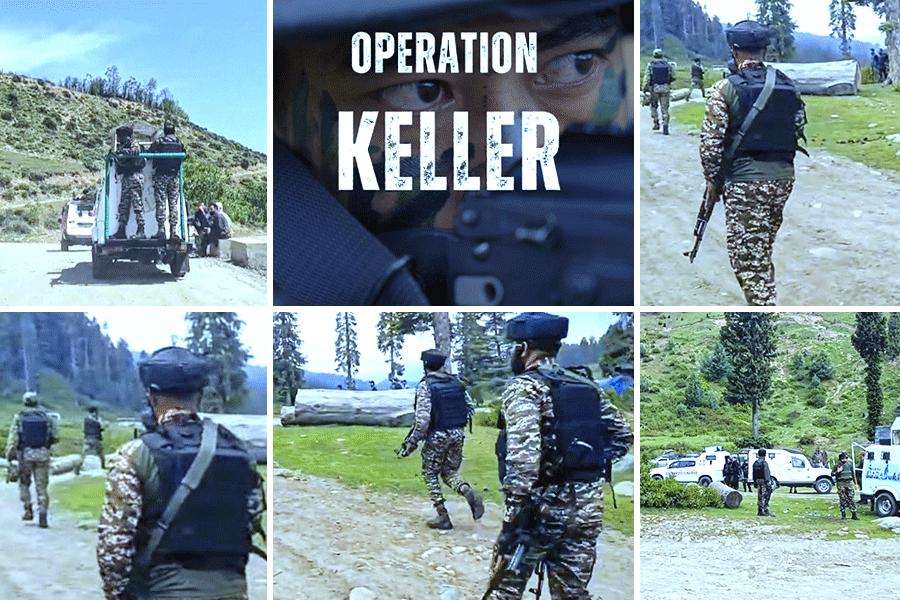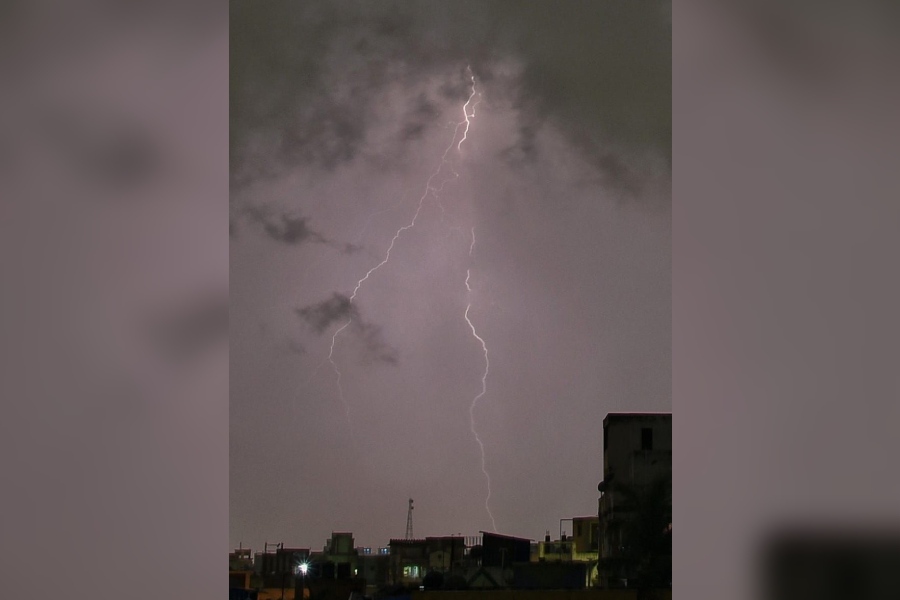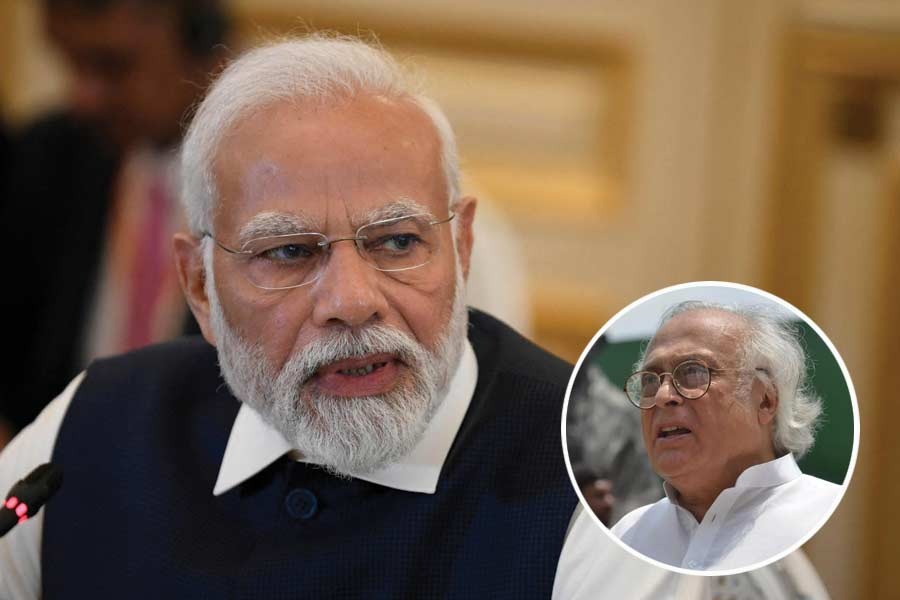
Chennai, Oct. 15: “Yes, sir,” replies Vice Admiral Joseph P Aucoin. The officer commands the US 7th fleet. This afternoon he is seated on the helicopter deck of the Indian Naval Ship Shivalik in the Port of Chennai. Alongside him are Vice Admirals Bimal Verma from India and Japan’s Yutaka Murakawa. Verma is the chief of staff of the Indian Navy’s eastern command.
“The oceans do not have boundaries like on land,” explains Admiral Aucoin. “We have to ensure a stable economic environment. (The exercise) Malabar is one means to it.”

The Admiral was asked if naval exercises with India and Japan will aid in “Freedom of Navigation” operations in the South China Sea. In maritime jargon today, “Freedom of Navigation” is euphemism for the contest against Chinese claims over the South China Sea.
In other words, the ships, submarines and carriers and aircraft that have gathered here this week are rehearsing for possible action in the South China Sea for this month
“FoN operations” have come to mean something more specific.
The US House of Representatives has urged the White House to send warships and aircraft over seven islands in the South China Sea. Three of these islands are alleged to have been artificially created by China where it has built or is building military bases. The FoN operations could mean sailing into and/or flying over territories that China believes it owns, without seeking Beijing’s permission.
A young Indian naval officer seated in a row in front of the Admirals will be at the heart of the wargame for a scenario in that setting. The wargame begins when dusk brings relief from the hot humidity of Chennai.
Commander Nandakumar Das from Kerala will give the order to sail and his boat will glide out of port and in the dark it will will dive and lose itself in the Bay of Bengal. From the early morning, he will play cat-and-mouse: he will hunt while being hunted.

Das is the commanding officer of the INS Sindhudhvaj, the Indian Navy’s Kilo-class submarine of Russian-origin. Across the water from where the Shivalik is berthed this afternoon and where Admiral Aucoin has just outlined his vision for the Malabar exercise, is the USS Fort Worth. A Littoral Combat Ship, the Fort Worth, is one of the latest warships in the US’ Pacific fleet.
Five months back, as she was sailing in waters close to the Spratly Islands, she was tailed by a frigate from China’s Peoples’ Liberation Army Navy. A remote-controlled helicopter called the Firescout will emerge from its hangar tomorrow to aid other aircraft from the American carrier, the USS Theodore Roosevelt, the Japanese destroyer, the Fuyuzuki, an Indian destroyer, the Ranvijay as well as American and Indian maritime surveillance planes flying out of INS Rajali, 75 kms inland from Chennai at Arakonnam, to scour the Bay for Das’ boat.


Das, meanwhile, will be dodging detection while trying to get within shooting distance of one of the ships. If he does manage it, it will not fire. Instead he will rise to periscope depth, switch-on a US communication system that has been placed in his boat for the exercise and will disclose his location. The US communication system is called the CENTRIXS.
In the water, sailing metres below him, the nuclear sub USS City of Corpus Christi will be looking out for Das’ boat too. There will be a difference though: Das will be talking to the CoCC even underwater. They will be talking to ensure they are not on collision course.
“At the core of the exercise is interoperability,” says Vice Admiral Verma. “The ability to operate together”.
The Indian Navy is not entirely happy using the CENTRIXS, a system developed for the US’ Central and Pacific commands to operate with “coalition” or “alliance” partners. It is an acronym for “Combined Enterprise Regional Information and Exchange System”.


Another senior officer from India says that though the CENTRIXS had been used in earlier Malabar drills, this time the Indian Navy was keen on using its own “INCIS” (Indian Navy Command Information System”). The Indians were not keen because the CENTRIXS method used an encrypted “card”, or a language whose code the Indians do not possess. But the Japanese were easy with it and the US did not want to tinker with a system they were not comfortable with.
Installation of the CENTRIXS system also requires US naval personnel to be onboard Indian warships. The Malabar exercise does have a system for embedding crews in other boats. The Indians, for example, will have a team of five – two doctors and three others – in the USS City of Corpus Christi, the US nuclear sub in these Bay of Bengal drills.

The Malabar exercises began first in 1992. But the scale and complexity of the exercises have gone through a sea change through their 18 editions. Despite the history, two things have remained constant: there is a distinct concern over Chinese claims in the South China Sea that have shaped the wargames and, second, that the navies that are participating in it today still have a wariness in opening out all their own systems.
In the current edition, India has brought in a new element : the INS Sindhudhvaj, a class of submarines that is also operated by the Chinese. The navies of the US, the UK and France have always been keen on exercising with the Kilo-class because they do not possess the Russian-origin diesel-electric submarines.
In New Delhi yesterday, the Chief of Naval Staff, Admiral Robin Dhowan, said the Malabar exercise is not “meant to counter anybody”. He was making the point that it was not specifically anti-China.
The Japanese Admiral here re-stated that. The National Security Advisors of China and Japan are currently in talks in Tokyo and an Indian army team is in joint exercises with China.
Such is the matrix within which Commander Das’ boat sails this evening. Six months back, the INS Sindhudhvaj picked up the pings from a sound locator beacon of a Coast Guard Dornier aircraft that went down off the coast of Tamil Nadu.
Nearly 40 days after the plane sank and two days before the endurance of the beacon was to die, the Sindhudhvaj picked up the signal and relayed it to salvagers. The debris was found, the crew wasn’t. But it was a testimony to the efficacy of the boat’s sensors.
That evening Das’ boat was listening. Tonight his realm is in silence.











